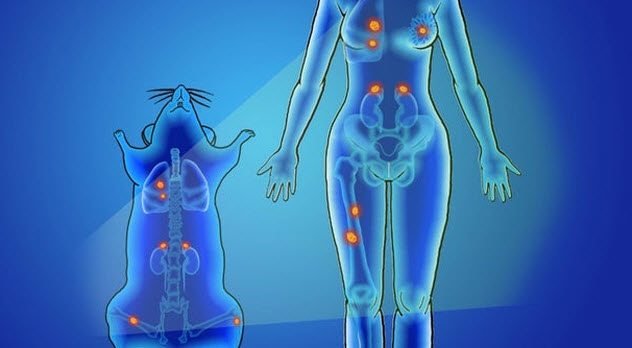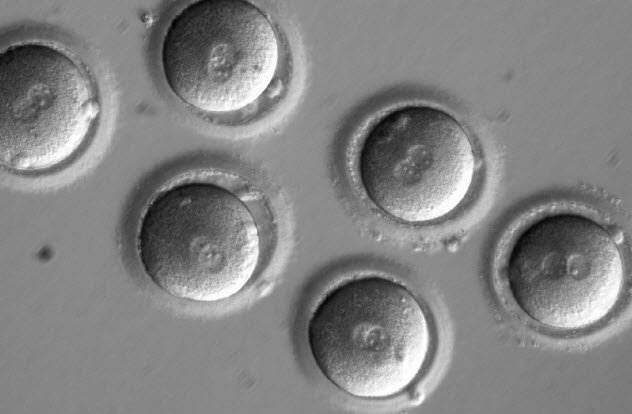Developments in technological innovation have totally changed the way we connect, journey, and do business. But they’ve also had a massive impact on our health. Many people grumble about movie gaming, smartphone, and Internet harmful addictions as well as the improving solitude motivated by our dependency on interaction techniques that let us prevent ever coming face-to-face with another individual being.Ironically, this same technologies have also converted our world into the information comparative of a small town or town. With all the discussing of healthcare information and the improvements in highly effective devices to make and keep us well, developments in medication are happening quicker than ever.Designer genes, treating the ageing, and get rid of the common cool all appear to be innovative medication. But significant improvement was made on all these things and more during the past year. Here are 10 latest healthcare developments and how they will impact the upcoming.
10.Successful Artificial Womb

Scientists have created an artificial womb capable of allowing very premature fetuses to develop normally for approximately one month. The device was tested on eight fetal lambs, which were extracted from their mother’s wombs prematurely and transferred to an artificial womb. The lambs continued to develop, showing normal growth and maturation until they were “delivered” after four weeks.The artificial womb consists of a clear plastic bag filled with synthetic amniotic fluid. The umbilical cord of the fetus is connected to a machine that provides nutrition and oxygen to the blood, similar to the placenta. A normal pregnancy lasts approximately 40 weeks. Thousands of babies are born very prematurely every year—after less than 26 weeks in utero. Only about half of these babies survive, and those that do suffer severe complications such as cerebral palsy, paralysis, and mental retardation. An artificial womb approved for use with humans would allow these early births to continue developing in a womb-like environment for a longer period of time. Creators of the device hope to test it on human babies within the next five years.
9.First Human-Pig Hybrid

This year, researchers successfully created a human-pig multiple, something scientifically referred to as a chimera. A chimera is an organism that contains tissues from two different varieties.One way to make a chimera is to introduce the human body organ of one creature into the human body of another, but this carries the possibility of the variety human body rejecting the foreign human body organ. The other way to make a chimera is to begin at the embryonic level, presenting the human body of one creature into the embryo of another and allowing them to make together. Beginning chimera tests resulted in the successful growth of rat tissues within a rabbit embryo. Mouse embryos genetically modified to generate a rat’s pancreatic, eyes, and center had all developed normally. The promising results led to tests with individual tissues. Pig human body parts are quite similar to individual human body parts, which is why youngster was chosen as lots. Human tissues were injected into initial phase pig embryos. The multiple embryos were then inserted in surrogate sows and allowed to make through the first trimester before being removed and analyzed. The result was 186 chimeric embryos that contained the beginning stages of important human body parts such as the center and liver. Being able to generate individual human body parts and tissue within anotherr varieties is a big step toward the ultimate goal of lab-grown individual human body parts, which have the potential to save thousands of lives. Currently, 22 people die every day while awaiting an human body organ transplant.
8.Flu-Fighting Frog Slime

A frog type varieties that was lately found in southeast Native indian has flu-fighting slime. The secretions on a frog’s skin contain short stores of meats, or necessary protein, which act as a secure against viruses. Researchers examined the necessary protein of the Native indian frog type and found that one of them, urumin, is capable of defending against the flu.Each stress of the flu contains two area necessary protein, hemagglutinin and neuraminidase. Flu stresses are known as for the difference of each necessary protein they contain. For example, H1N1 has the H1 form of hemagglutinin and the N1 form of neuraminidase. The most common stresses of periodic flu malware contain H1. Urumin has successfully murdered every type of H1 flu stress examined, even stresses that have developed a potential to deal with present antiviral treatments.Current medicines that cure the flu focus on the neuraminidase necessary protein of the malware, which mutates more often than the hemagglutinin. A medication that specifically objectives the hemagglutinin would be effective against more stresses of the flu and could provide the foundation for a worldwide vaccine.
7.New Melanoma Treatment

A team of researchers at Michigan State University has discovered a potential drug that could drastically reduce the mortality rate of melanoma. This is the deadliest form of skin cancer primarily because the disease can quickly metastasize (spread through the body and affect organs such as the lungs and brain). This happens through a transcription process in which our genes produce RNA molecules and certain proteins in melanoma tumors that allow the cancer cells to spread.A new chemical compound has shown success in interrupting this cycle. The compound shuts down the transcription process, which prevents the cancer from being able to spread so aggressively. In lab studies of its effect on melanoma cells, the compound was successful in reducing the spread of the cancer by 90 percent.The potential drug is still a few years away from human trials, but researchers are optimistic about the possibilities. In addition to treating melanoma, the compound will also be tested for its ability to halt the spread of other types of cancer.
6.Bad Memory Eraser

People who suffer from post-traumatic stress disorder or other trauma-related anxiety attacks could one day have the ability to simply erase their bad memories.Scientists have been studying this for years. Recently, a pair of researchers at the University of California–Riverside (UCR) experienced a breakthrough when examining the effects of memory. They specifically looked at the pathways that create memories and allow us to access them.When a traumatic event occurs, the brain’s pathway to that memory is stronger than pathways to memories that are not associated with trauma. This is why a person can remember every detail of a horrific event that happened years earlier but fail to recall what he ate for breakfast that morning.To test traumatized mice, the UCR researchers played a high-pitched noise and shocked the mice at the same time. Predictably, playing the sound again caused the mice to freeze in fear.Using a technique called optogenetics, the researchers were able to weaken the connections between the neurons associated with the pathway of the high-pitched noise. The mice were once again exposed to that sound but no longer showed any signs of fear. Their memory of the traumatic event had been effectively erased.An important aspect of the technique is that only targeted memories are affected, so trauma sufferers would be able to forget their painful experience without forgetting how to tie their shoes.
5.Spider Venom Stroke Treatments

You would not want to get attacked by an Australia Favorite Downs channel web spider. Their venom can kill a individual in 15 minutes. But it also contains an ingredient that can safeguard minds from the harm induced during a action.When someone has a action, blood vessels circulation to the mental abilities are interrupted, which starves the mind of oxygen. The mind responds by functioning in an abnormal way that produces acidity. This acidity causes minds to die. Hi1a, a particular compound found in the Australia spider’s venom, has been shown to guard minds from stroke-related harm. When Hi1a was administered to mice two time after an caused action, the extent of mind harm was reduced by 80 %. When researchers waited until eight time after a action to manage Hi1a, the amount of mind harm was still 65 % less than what was seen in untreated mice.There are currently no medications that secure action sufferers from mind harm. Some treatments will break up blood vessels clotting in the mind or control internal bleeding to reduce injury to the mind. But nothing is available at this time to reverse mind harm from a action. If Hi1a proves successful in individual tests, it would drastically improve the outcome for action sufferers.
4.Human Trials Of Antiaging Treatment

An anti aging therapy is a stride nearer to reaching the market. After animal tests revealed amazing success in treating ageing of tissues, human tests are currently ongoing. Our tissues are capable of fixing themselves, but their capability to do so decreases as we grow up. A certain metabolite called NAD+ is present in every mobile and crucial to the fix procedure.A team of scientists from the School of New South Wales performed tests including NMN, which makes up half of an NAD+ compound. After NMN was given to seniors rats, they revealed an increased capability to fix broken tissues. After just one week, the tissues of mature rats that had been handled with NMN were performing just as well as the tissues of younger rats.[7]A final help the trial included revealing rats to radiation. Mice that had been pretreated with NMN revealed 'abnormal' amounts of mobile harm than ones that had not. Even rats handled with NMN after exposure revealed less mobile harm.An effective anti aging therapy would not be limited to use in seniors sufferers. Jet pilots encounter multiplied ageing when they are subjected to cosmic radiation. People who travel on aircraft or go through X-rays are also revealed to radiation, at the same time a much less. And child years cancer heirs encounter multiplied mobile ageing, which leads many to suffer from a serious disease such as Alzheimer’s before they reach age 45.
3.Early Detection Cancer Tracking

Scientists from Rutgers School found a way to efficiently track micrometastases, small cancers in the human body that are too small to be recognized by current testing methods. This new strategy includes treating small shine stays into the blood vessels and patiently waiting to see where they area.The Rutgers team used nanoparticles that release shortwave infra-red light. The nanoparticles are designed to stay to melanoma tissues as they move throughout the human body. In early research, a test done on rats revealed that the nanoparticles perfectly monitored breasts cancers tissues as they distribute to various places in the critter’s feet and adrenals. The nanoparticle method is capable of discovering a growth months before MRI tests would be able to. Scientists believe the process will be used for human melanoma tests within the next five years.
<
2.A Cure For The Common Cold

For hundreds of years, people have been trying to find a treatment for the typical cool. A traditional Egypt medical papers old 1550 BC advices someone suffering from a cool to repeat “in organization with the administration of dairy of one who has carried a male child, and fresh gum” to stop themselves.Today’s treatments are about as efficient. Vitamin C pills, Echinacea herbal tea, and various over-the-counter medicines fail against the typical cool.But that may be about to change. While many malware are responsible for inducing the typical cool, rhinovirus is the at their most effective, resulting in up to 75 percent of attacks. An organization of scientists at Glasgow Napier School discovered success a few months ago when examining certain anti-microbial proteins. The group produced proteins discovered in hogs and lambs. Then the scientists examined the proteins against bronchi cells that had been contaminated with rhinovirus. The proteins were successful in eliminating the virus.[9]Researchers are working to change the proteins to be even more efficient against the rhinovirus before developing them into a drug capable of treating the typical cool.
1.Embryonic DNA Repair

For the first time, scientists have successfully edited the DNA in a human embryo without causing any unintended harmful mutations.An international team of scientists conducted an experiment using a powerful new gene-editing technique. Sperm was obtained from a donor carrying a genetic mutation that causes cardiomyopathy, a disorder that weakens the heart and causes irregular heartbeats, heart valve problems, and heart failure.The sperm was used to fertilize donor eggs, and then the gene-editing tool was used to alter the mutation. Scientists described it as a microscopic surgery in which they administered a precise cut to the mutated gene.When the gene was cut, the embryo was triggered to repair the defective gene on its own. The technique was used on 58 embryos, and the gene mutation was successfully corrected in 70 percent of them. Most importantly, the correction did not result in unintended defects in other areas of the DNA, as was the case in earlier experiments. The embryos were not used to create babies. More testing is required before that would be possible.[10]Critics of genetic modification in embryos are concerned about a few factors. Changes made to the DNA of an embryo would be passed down in future generations, so any mistakes made in the gene-editing process could ultimately result in new genetic diseases. There are also concerns that the research could lead to “designer babies,” where parents pick and choose the traits of their children before birth, effectively crafting a child with certain physical aspects and abilities.Scientists researching embryonic genetic modification state that their work is only aimed at preventing genetic diseases, not creating made-to-order offspring. Diseases that could be prevented with embryonic gene editing include Huntington’s disease, cystic fibrosis, and cases of breast and ovarian cancer caused by mutations in the BRCA gene.
very nice and very informative post.keep sharing such posts.
Downvoting a post can decrease pending rewards and make it less visible. Common reasons:
Submit
Thanks for your feedback I will try my best to deliver you valuable stuff
Downvoting a post can decrease pending rewards and make it less visible. Common reasons:
Submit
All 10 new discoveries are hope for future in human life cycle.
Downvoting a post can decrease pending rewards and make it less visible. Common reasons:
Submit
May be a new generation is gong to be invent
Downvoting a post can decrease pending rewards and make it less visible. Common reasons:
Submit
wow it's great & Informative article, Thanks for sharing @falaksheransari
Downvoting a post can decrease pending rewards and make it less visible. Common reasons:
Submit
Hi. I am @greetbot - a bot that uses AI to look for newbies who write good content!

Your post was approved by me. As reward it will be resteemed by a resteeming service.
Downvoting a post can decrease pending rewards and make it less visible. Common reasons:
Submit
Science change the human life and way of thinking
Downvoting a post can decrease pending rewards and make it less visible. Common reasons:
Submit
WARNING - The message you received from @tripadvisor.com is a CONFIRMED SCAM! DO NOT FOLLOW the instruction in the memo! For more information, read this post: https://steemit.com/steemit/@arcange/scammer-reported-tripadvisor-com
Downvoting a post can decrease pending rewards and make it less visible. Common reasons:
Submit
Really amazing and great technology's we know scientist always doing research on new think and some time they are succeed but some time not but when they are succeed any research our life is very comfortable.
Downvoting a post can decrease pending rewards and make it less visible. Common reasons:
Submit
wonderful and great post. full of information
Downvoting a post can decrease pending rewards and make it less visible. Common reasons:
Submit
oh great, i have watch video related to this and it was also very informative.
Downvoting a post can decrease pending rewards and make it less visible. Common reasons:
Submit
Hi author! I think science has done a tremendous success in every walk of life.. your post was amazing
Downvoting a post can decrease pending rewards and make it less visible. Common reasons:
Submit
Great! thanks for sharing this informative post
Downvoting a post can decrease pending rewards and make it less visible. Common reasons:
Submit
welcome.Follow me for further knowledge
Downvoting a post can decrease pending rewards and make it less visible. Common reasons:
Submit